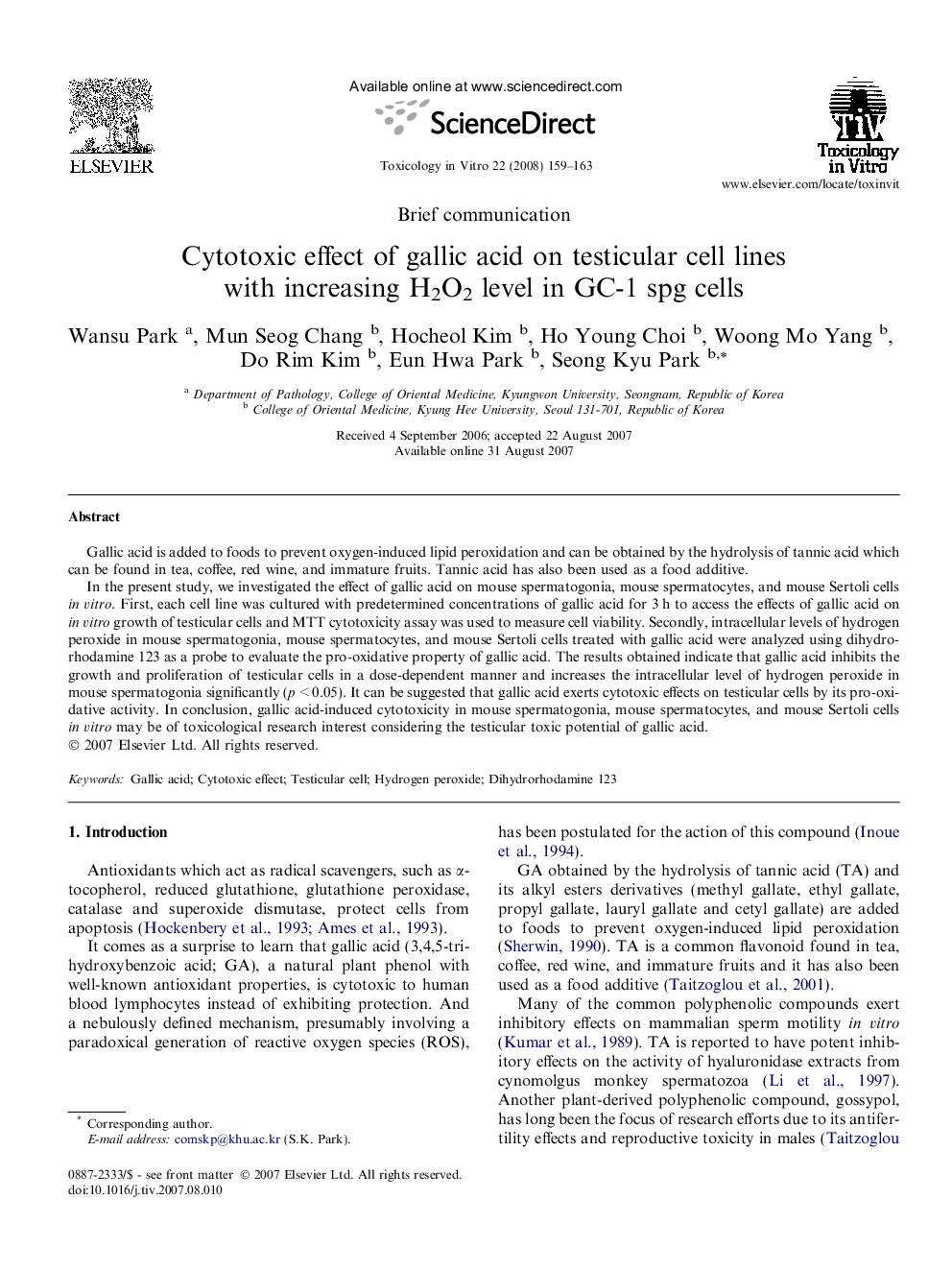| Article ID | Journal | Published Year | Pages | File Type |
|---|---|---|---|---|
| 2603628 | Toxicology in Vitro | 2008 | 5 Pages |
Gallic acid is added to foods to prevent oxygen-induced lipid peroxidation and can be obtained by the hydrolysis of tannic acid which can be found in tea, coffee, red wine, and immature fruits. Tannic acid has also been used as a food additive.In the present study, we investigated the effect of gallic acid on mouse spermatogonia, mouse spermatocytes, and mouse Sertoli cells in vitro. First, each cell line was cultured with predetermined concentrations of gallic acid for 3 h to access the effects of gallic acid on in vitro growth of testicular cells and MTT cytotoxicity assay was used to measure cell viability. Secondly, intracellular levels of hydrogen peroxide in mouse spermatogonia, mouse spermatocytes, and mouse Sertoli cells treated with gallic acid were analyzed using dihydrorhodamine 123 as a probe to evaluate the pro-oxidative property of gallic acid. The results obtained indicate that gallic acid inhibits the growth and proliferation of testicular cells in a dose-dependent manner and increases the intracellular level of hydrogen peroxide in mouse spermatogonia significantly (p < 0.05). It can be suggested that gallic acid exerts cytotoxic effects on testicular cells by its pro-oxidative activity. In conclusion, gallic acid-induced cytotoxicity in mouse spermatogonia, mouse spermatocytes, and mouse Sertoli cells in vitro may be of toxicological research interest considering the testicular toxic potential of gallic acid.
